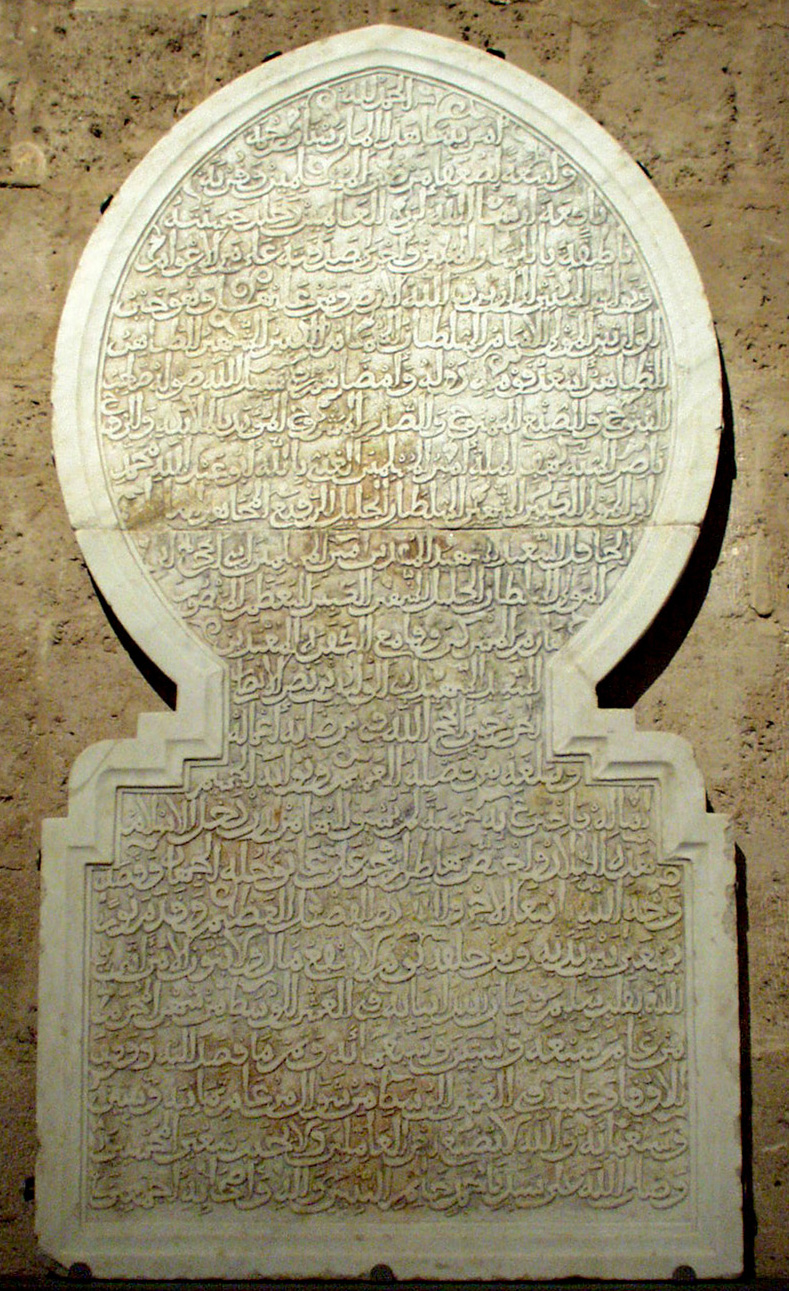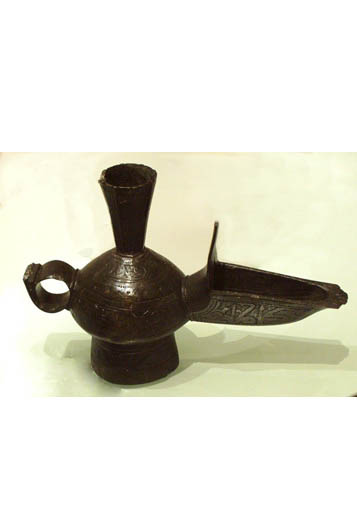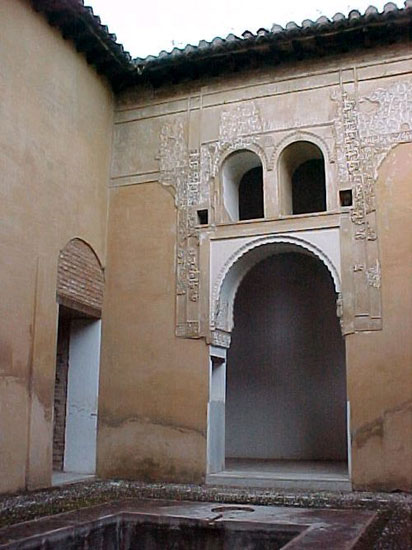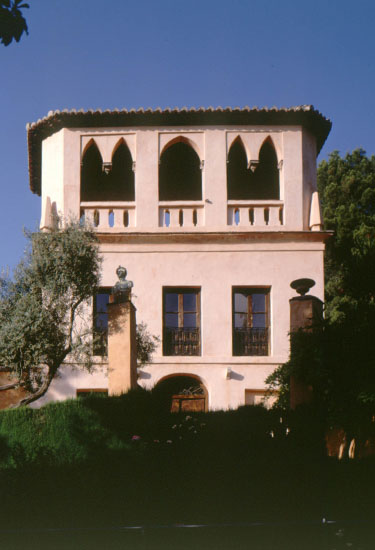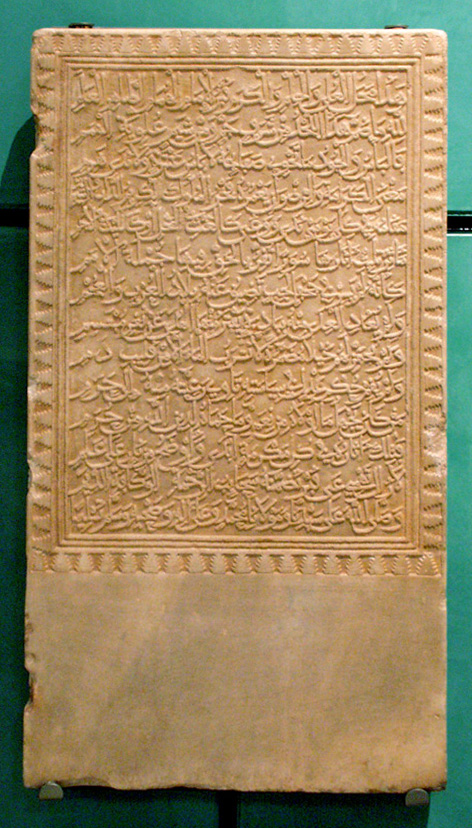Corbel from the eaves of the Court of Comares

The Palace of Comares, the key palace construction by Sultan Yusuf I, has an emblematic hall from which it takes its name. We will see that in 1855 the portico at the entrance to the Palace had to be propped up after it collapsed due to the rotten condition of various beams from its original Nasrid single-sided roof, which covered both the portico and the adjoining Hall of the Boat (Sala de la Barca). The collapse of the gallery of the North portico of the courtyard of the Palace of Comares led to the first great restoration campaigns conducted by Rafael Contreras, with the aid of the engineer Ramón Soriano and the architects Baltasar Romero and Juan Pugnaire in 1857. This restoration work transformed the appearance of the Nasrid Palace by adding various decorative construction features to create the image we see today.
It was during the work on the eaves that this bracket was taken down and transferred to the Alhambra collection. From a stylistic point of view it is different from those used in the Palace of the Lions, in that it is carved with eight-shape motifs in a series of simple knots that spread across the width. These motifs are shallow-carved and painted and show a degree of evolution from the brackets and modillions with lobes used in the Caliphate Era.
Our presentation of this piece, which we will be contextualizing within the framework of Nasrid woodwork, will serve as an introduction to our description of one of the best restorations carried out in the Alhambra in the 19th Century, forerunner of the decorative praxis carried out later by Rafael Contreras Muñoz to leave this part of the Palace just as we see it today.
Time: Saturdays at 12.00
Place: Room V, Museum of the Alhambra, Palace of Charles V
Dr Javier Serrano Espinosa





 Contact
Contact






